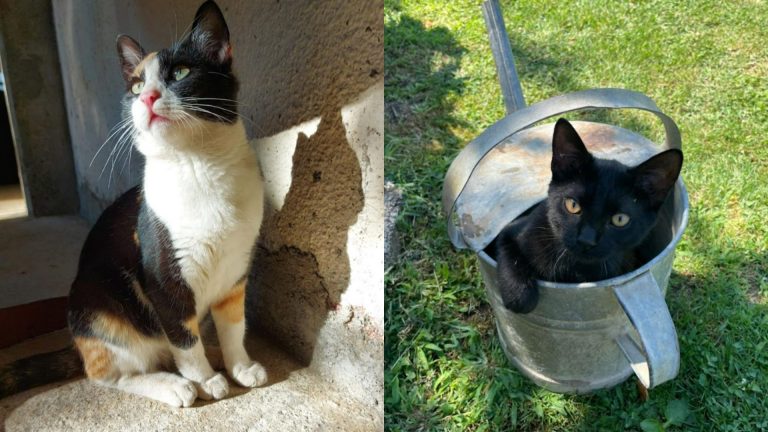List Of Biggest Snakes Ever Spotted In Each U.S. State
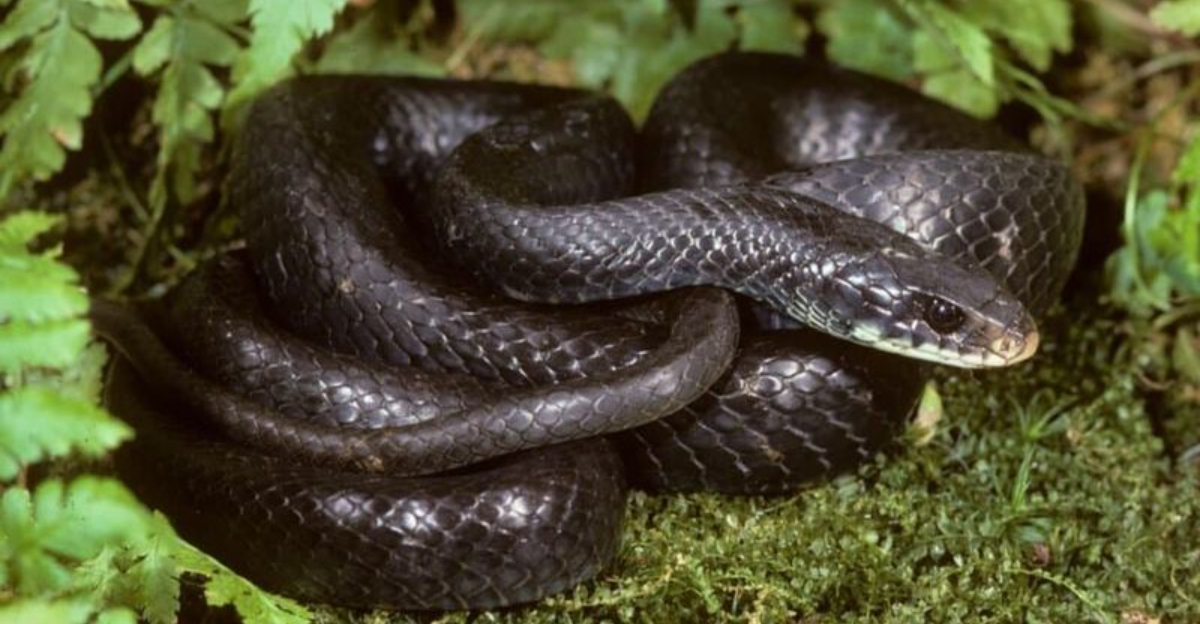
Ever wondered what slithers in your backyard? America’s diverse landscapes host an amazing variety of snakes, from massive pythons in Florida’s swamps to hardy garter snakes in Alaska’s chilly terrain.
Join us as we explore the largest snake ever documented in each of the 50 states, revealing surprising facts about these fascinating reptiles.
1. Alabama – Eastern Diamondback Rattlesnake
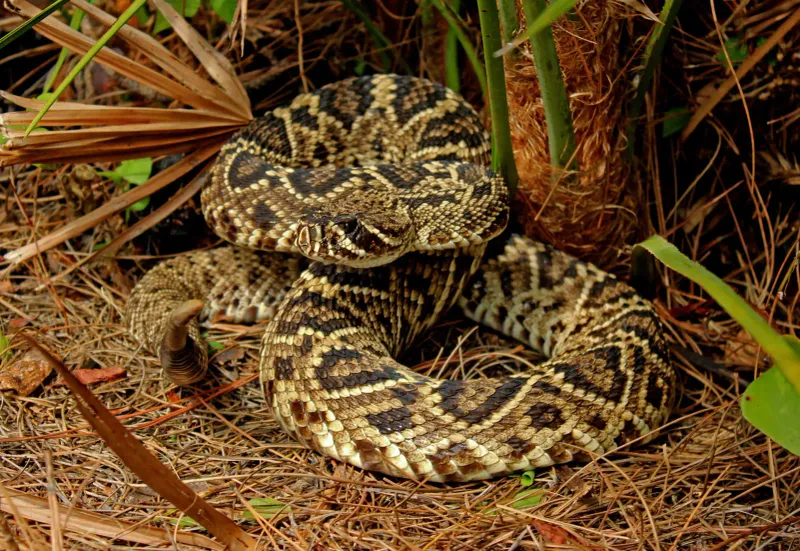
A monstrous 8-foot-2-inch Eastern Diamondback was captured near Mobile in 2009, causing quite the local sensation.
This hefty serpent weighed over 34 pounds! Alabama’s forests provide perfect hunting grounds for these impressive predators. With distinctive diamond markings and a rattle that commands respect, these snakes prefer to avoid humans rather than confront them.
2. Alaska – Garter Snake

Despite Alaska’s frigid reputation, a 3-foot common garter snake was documented near Juneau in 2014. These cold-hardy reptiles survive where other snakes can’t!
Using natural antifreeze compounds in their blood, these remarkable creatures can withstand temperatures that would kill most reptiles. Their small size and distinctive yellow stripes make them easily recognizable to hikers exploring Alaska’s southern regions.
3. Arizona – Arizona Black Rattlesnake
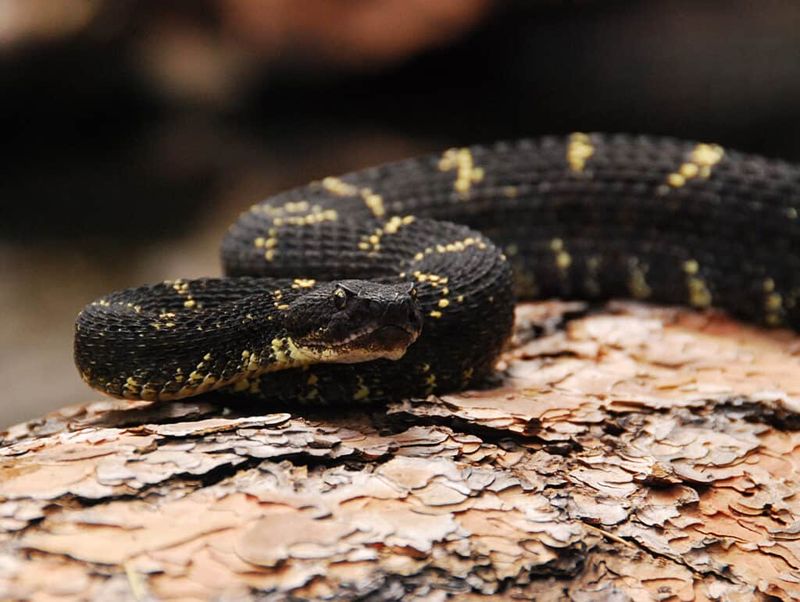
Hikers in the Superstition Mountains stumbled upon a 7-foot-3-inch Arizona Black Rattlesnake in 2016. Its coal-black scales glistened in the desert sun as it calmly observed the startled travelers. Unlike many rattlesnakes, this species prefers higher elevations.
They’re typically found between 5,000-9,000 feet, hunting among pine forests and rocky outcroppings where their dark coloration provides excellent camouflage against volcanic rocks.
4. Arkansas – Timber Rattlesnake
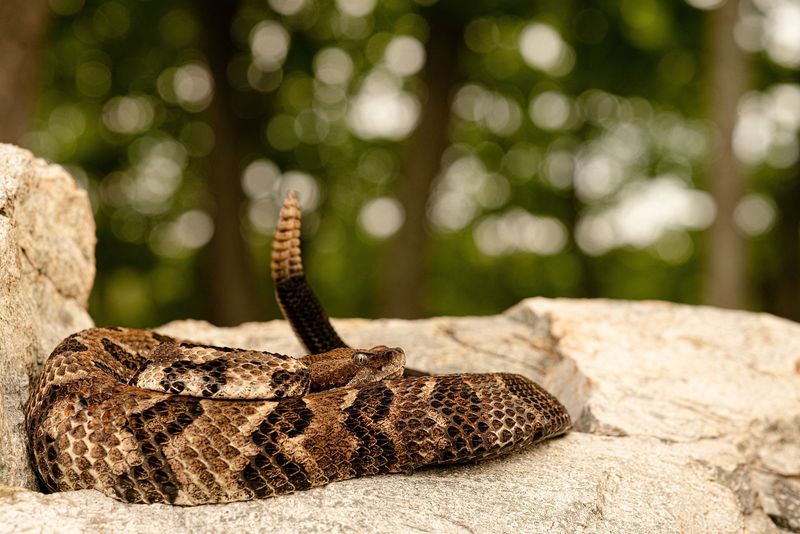
A timber rattlesnake measuring just over 6 feet was encountered by forestry workers in the Ozark National Forest in 2011. The magnificent creature displayed its characteristic yellow-brown banding against a darker body.
Known locally as “canebrake rattlers,” these impressive snakes thrive in Arkansas’s dense woodlands. They’re ambush predators, often staying motionless for days while waiting for unsuspecting rodents to pass by their carefully selected hunting spots.
5. California – Western Diamondback Rattlesnake
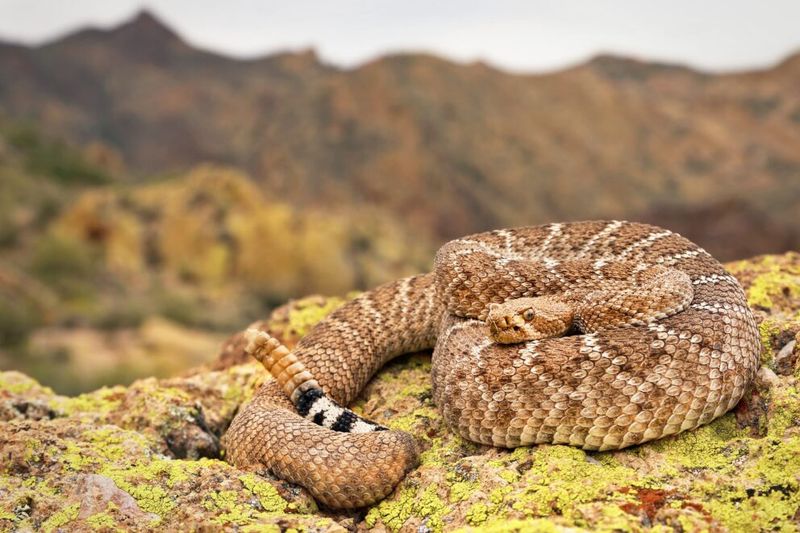
A behemoth 8-foot-4-inch Western Diamondback was documented in San Diego County back in 1979. Local wildlife officials were astonished by its girth – nearly as thick as a man’s thigh! California’s diverse habitats support healthy rattlesnake populations, especially in less-developed desert regions.
These impressive predators help control rodent populations naturally, though their potent venom demands respectful distance from hikers and outdoor enthusiasts.
6. Colorado – Bullsnake
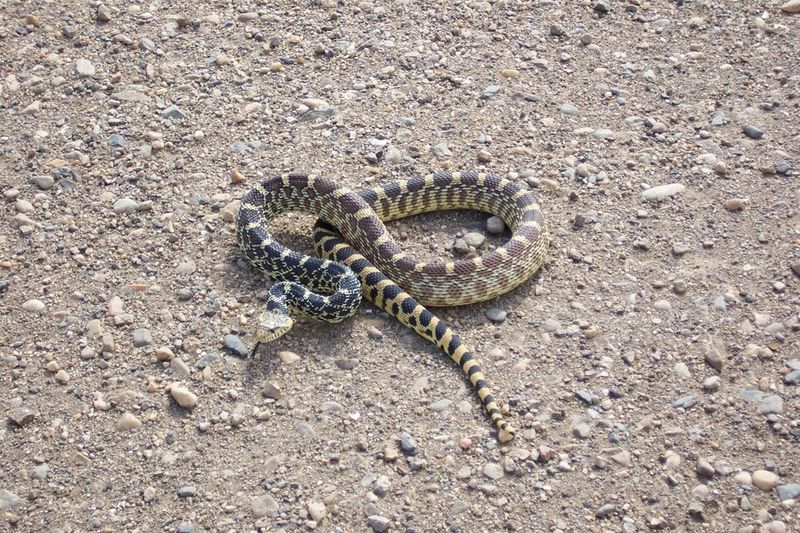
Ranchers near Fort Collins encountered an 8-foot bullsnake patrolling their barn in 2018. This gentle giant had likely been keeping their property rodent-free for years!
Bullsnakes mimic rattlesnakes when threatened, flattening their heads and vibrating their tails against dry leaves. This clever adaptation helps them avoid predators, though it sometimes leads to mistaken identity by humans. Their powerful constriction skills make them excellent mousers.
7. Connecticut – Eastern Rat Snake
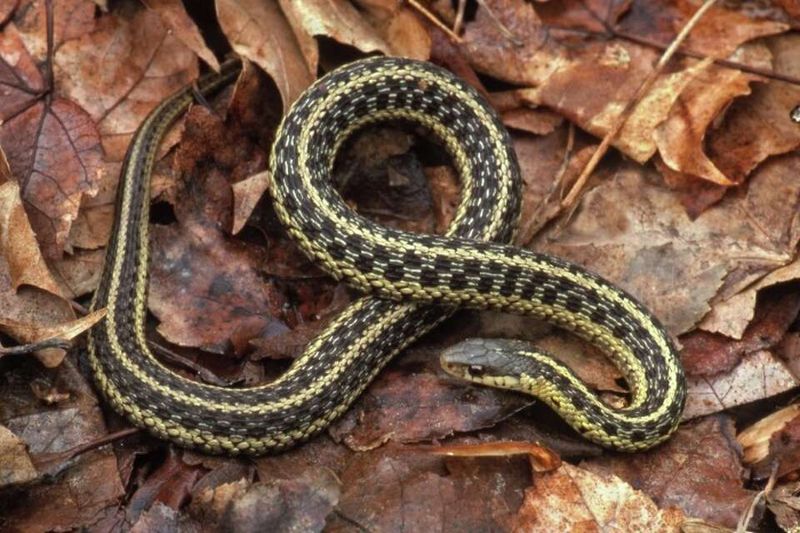
A homeowner in Litchfield County got quite a surprise when discovering an 8-foot eastern rat snake in their attic in 2015. This impressive climber had made itself at home among the rafters! Connecticut’s forests provide perfect habitat for these sleek black serpents.
Excellent climbers, they scale trees and buildings with ease. Their diet primarily consists of rodents and birds, making them valuable allies for farmers and gardeners alike.
8. Delaware – Eastern Kingsnake
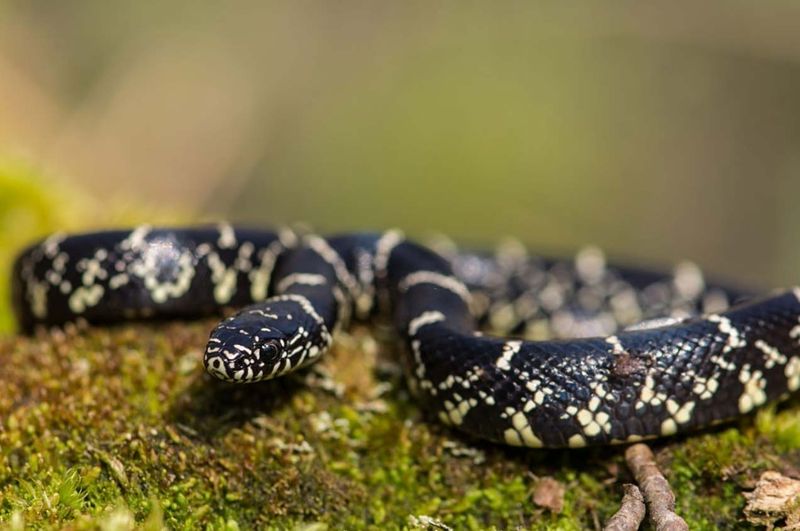
A remarkable 7-foot kingsnake was photographed crossing a trail at Bombay Hook Wildlife Refuge in 2013. Its glossy black scales featured striking white chain-like patterns running down its back. Kingsnakes earn their royal name by eating other snakes – even venomous ones!
Their immunity to rattlesnake venom makes them nature’s perfect predator. Delaware’s mix of wetlands and woodlands creates ideal hunting grounds for these beneficial constrictors.
9. Florida – Burmese Python
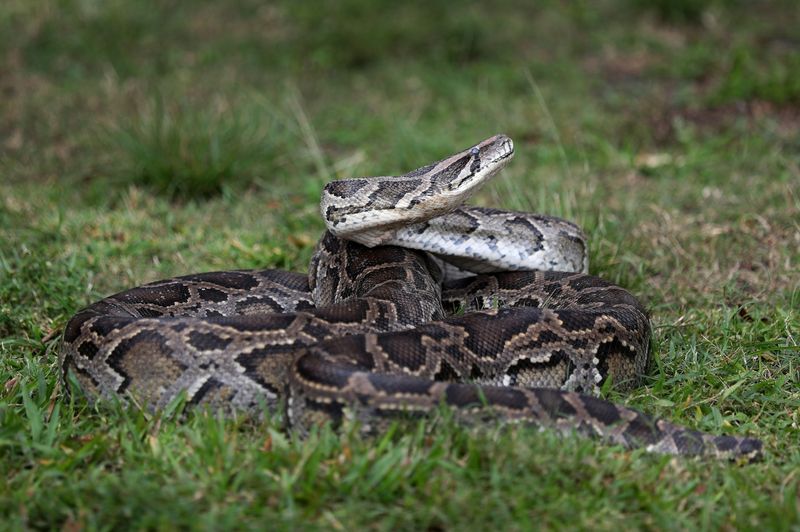
The Sunshine State holds America’s snake size record – an 18.8-foot Burmese python captured in the Everglades in 2022. This massive invasive predator weighed a staggering 215 pounds!
Florida’s warm climate has allowed escaped or released pet pythons to thrive and reproduce. These non-native giants have dramatically impacted native wildlife populations. State-sponsored python hunts now offer bounties to help control their spreading population.
10. Georgia – Eastern Indigo Snake
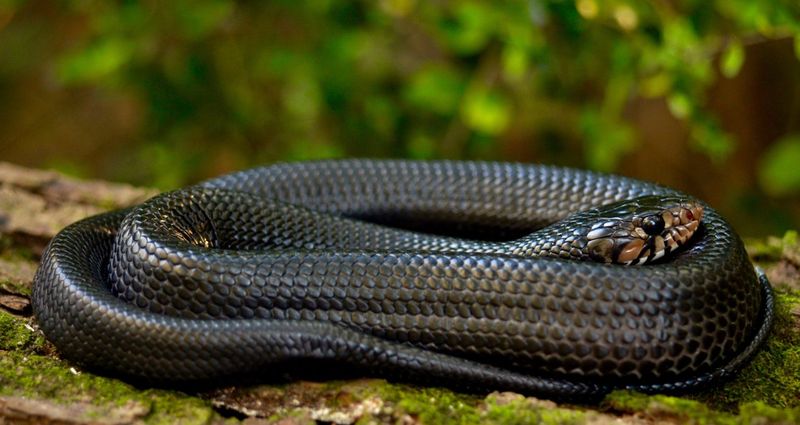
Wildlife biologists documented an 8.5-foot Eastern Indigo snake in Bulloch County in 2019. This protected species showcased its characteristic glossy blue-black scales that shimmer iridescently in sunlight. As Georgia’s longest native snake, the Eastern Indigo is sadly endangered due to habitat loss.
These non-venomous hunters have a particular fondness for rattlesnakes, ironically making them valuable for human safety. Their docile nature around people has earned them the nickname “gentle giant.”
11. Hawaii – Brown Tree Snake
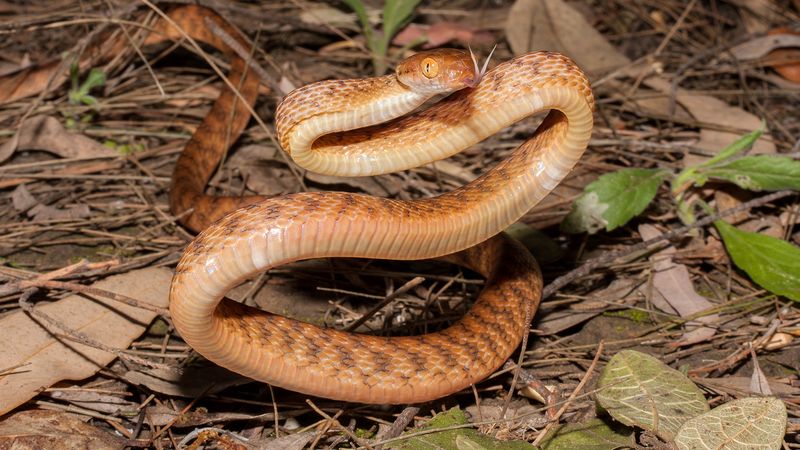
Hawaii’s Department of Agriculture intercepted a 10-foot brown tree snake attempting to enter Oahu via cargo ship in 2020. This potential ecological disaster was narrowly averted!
Though not established in Hawaii, these invasive predators devastated Guam’s bird populations after accidental introduction. Hawaii’s strict biosecurity measures aim to prevent similar catastrophe. The islands’ lack of natural predators would make invasion particularly damaging to native wildlife.
12. Idaho – Bullsnake
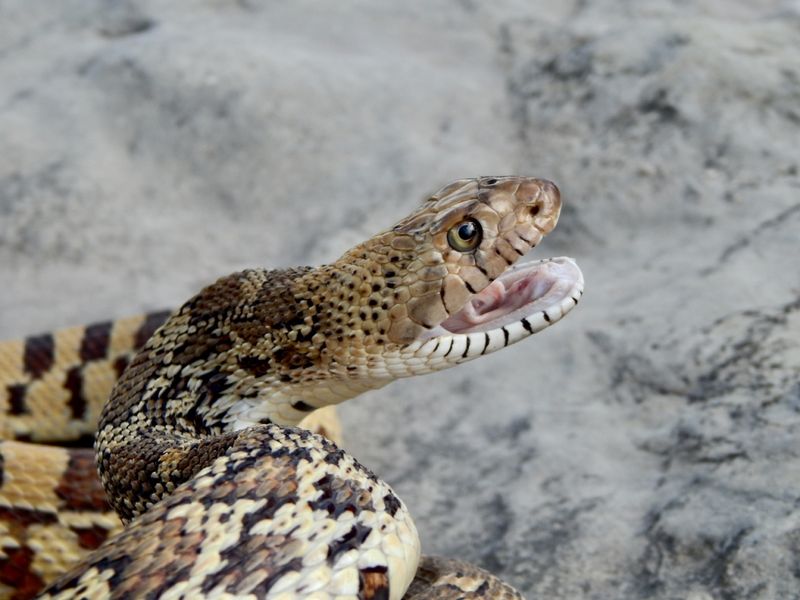
Farmers near Twin Falls discovered an 8-foot bullsnake patrolling their grain storage in 2017. The massive reptile had grown fat on a steady diet of field mice and voles. Idaho’s agricultural areas create perfect hunting grounds for these beneficial constrictors.
Often mistaken for rattlesnakes, bullsnakes actually help farmers by controlling rodent populations naturally. Their impressive size and mellow temperament make them fascinating subjects for wildlife photographers.
13. Illinois – Eastern Foxsnake
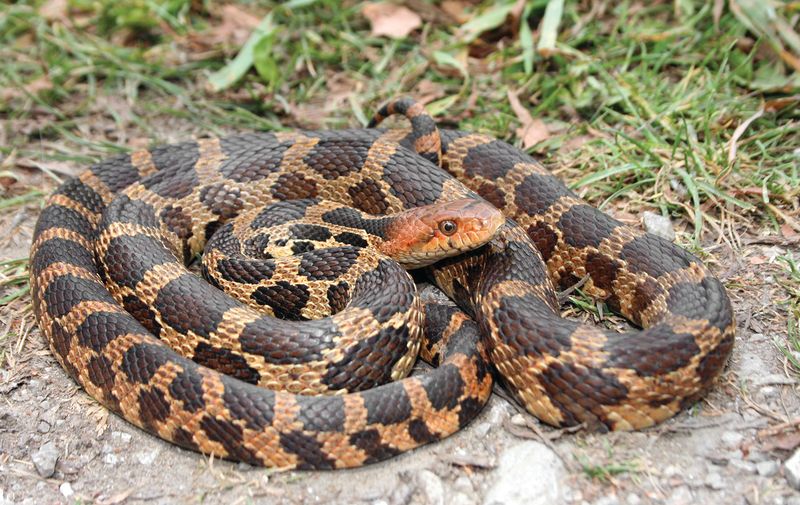
A construction crew working near Chicago unearthed a 6-foot eastern foxsnake in 2014. The copper-headed beauty quickly became the job site mascot before being safely relocated. Illinois’ wetlands and prairies provide ideal habitat for these copper-colored constrictors.
Often confused with copperheads due to their coloration, foxsnakes are actually harmless and beneficial. Their name comes from the musky fox-like odor they release when threatened.
14. Indiana – Black Kingsnake
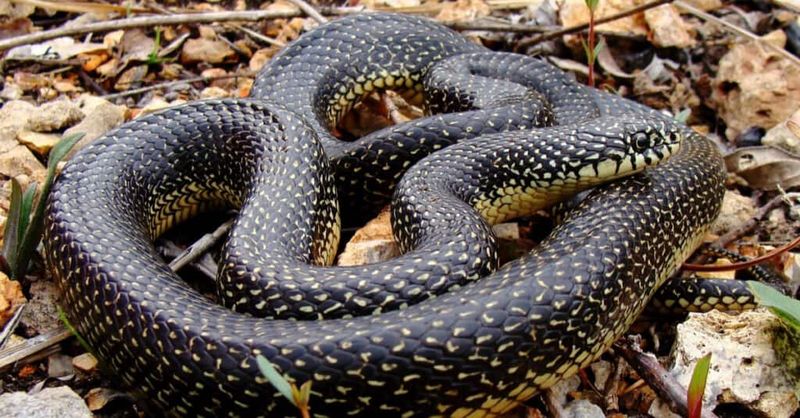
Hikers in Brown County State Park photographed a 6-foot black kingsnake crossing a trail in 2016. Its jet-black scales gleamed in dappled sunlight as it gracefully navigated the forest floor. Indiana’s diverse forests create perfect hunting grounds for these snake-eating specialists.
Kingsnakes earned their regal name by preying on other snakes – even venomous ones! Their immunity to venom gives them a unique ecological advantage over potential competitors.
15. Iowa – Prairie Kingsnake
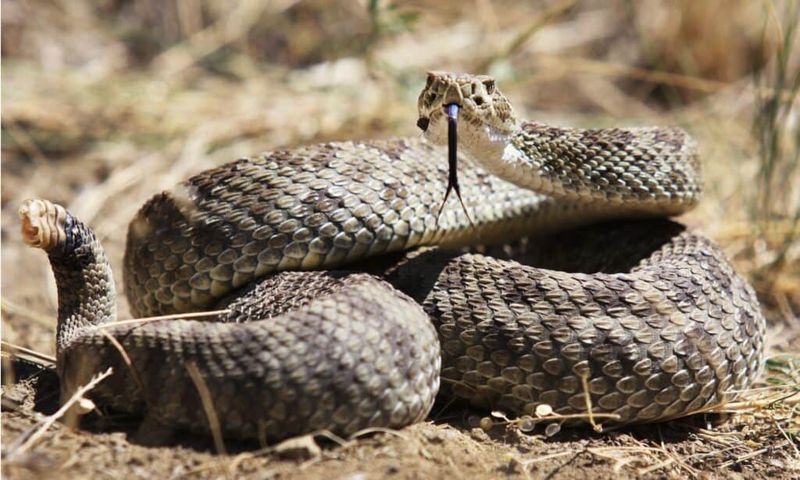
Farmers near Des Moines discovered a 5-foot prairie kingsnake keeping their barn rodent-free in 2019. Its distinctive brown blotches against a tan background made identification easy for local wildlife experts. Iowa’s agricultural landscape creates perfect habitat for these beneficial constrictors.
Prairie kingsnakes thrive in grasslands and farmlands where rodent populations provide abundant food. Their docile nature around humans makes dangerous encounters extremely rare.
16. Kansas – Western Rat Snake

A 7-foot western rat snake was discovered sunning itself along the Flint Hills Trail in 2018. The impressive black serpent quickly retreated into tallgrass when approached by surprised hikers. Kansas’s mix of prairies and woodlands creates ideal habitat for these remarkable climbers.
Also known as “pilot blacksnakes,” they excel at raiding bird nests and climbing trees. Their sleek bodies allow them to ascend vertical surfaces that would challenge most other snake species.
17. Kentucky – Timber Rattlesnake
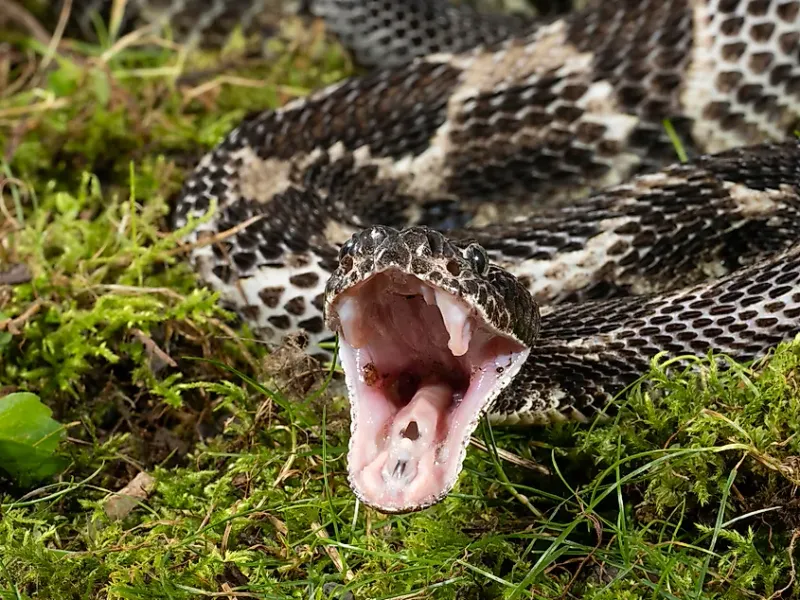
Hikers in Daniel Boone National Forest encountered a 6-foot timber rattlesnake sunning on a rocky outcrop in 2017. Its yellow-brown body with dark crossbands stood out dramatically against the limestone. Kentucky’s forested mountains provide perfect habitat for these venomous predators.
Unlike many snake species, timber rattlesnakes give birth to live young rather than laying eggs. Their distinctive rattle serves as a polite warning to give them space.
18. Louisiana – Eastern Diamondback Rattlesnake

Swamp tour guides near Lafayette documented an 8-foot-3-inch eastern diamondback in 2012. This massive serpent was spotted sunning on a cypress knee, its diamond pattern unmistakable even from a distance.
Louisiana’s swamps and wetlands create perfect hunting grounds for these impressive predators. With heads nearly as large as a man’s fist, they possess the longest fangs of any North American snake. Despite their fearsome reputation, they prefer avoiding human contact.
19. Maine – Eastern Garter Snake
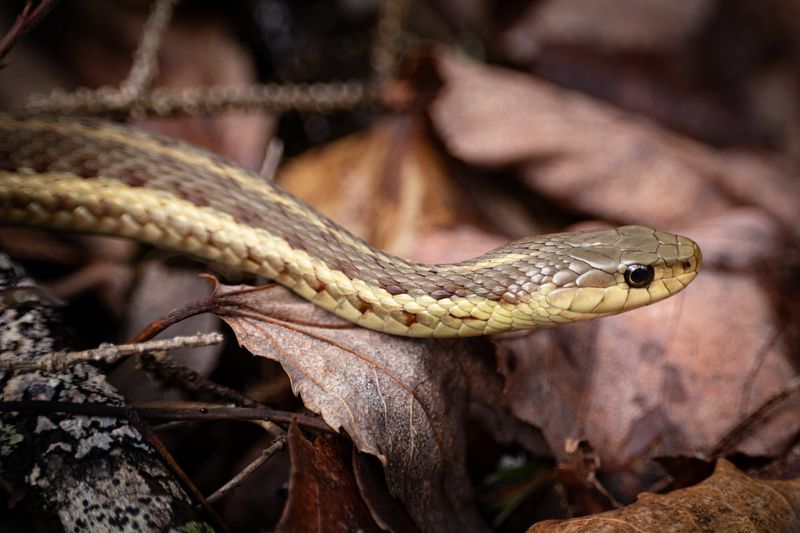
A surprisingly large 3-foot eastern garter snake was documented by researchers near Acadia National Park in 2015. Its yellow stripes stood out brilliantly against its dark body as it slithered through coastal vegetation. Maine’s short summers mean snakes must maximize feeding opportunities.
Garter snakes are among the few species hardy enough to thrive this far north. Their varied diet includes earthworms, amphibians, and small fish caught along shorelines.
20. Maryland – Eastern Ratsnake
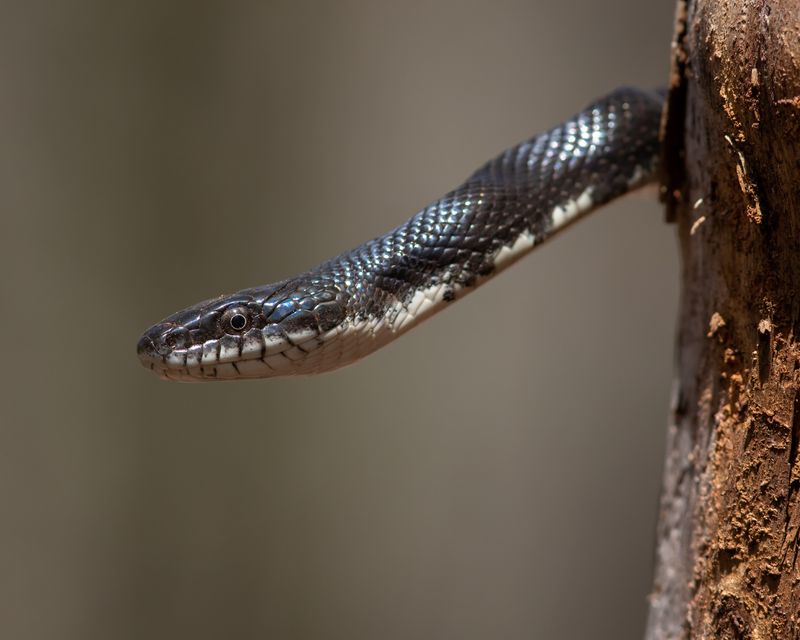
Homeowners in Frederick County were startled to find an 8-foot eastern ratsnake draped across their porch railing in 2016. The glossy black serpent had likely been keeping their property mouse-free for years!
Maryland’s diverse habitats support healthy populations of these beneficial constrictors. Excellent climbers, they’re often spotted ascending trees and exploring barns. Despite their intimidating size, they’re completely harmless to humans and make excellent natural pest control.
21. Massachusetts – Eastern Ratsnake
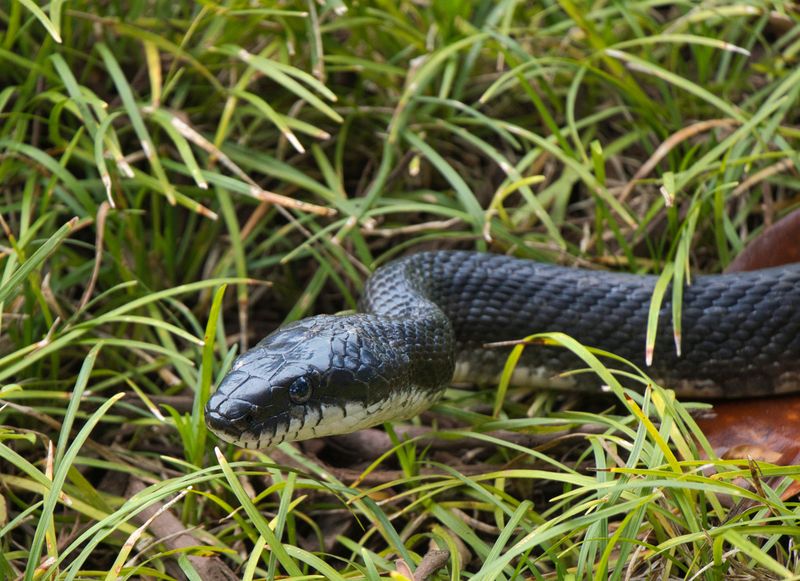
Hikers in the Berkshires photographed an 8-foot eastern ratsnake ascending a large oak tree in 2019. Its powerful muscles rippled visibly as it navigated the rough bark with surprising speed. Massachusetts represents the northern edge of this species’ range.
These impressive climbers can scale virtually any textured surface. Their diet shifts seasonally – focusing on ground-dwelling rodents in spring and bird nests in summer.
22. Michigan – Eastern Foxsnake
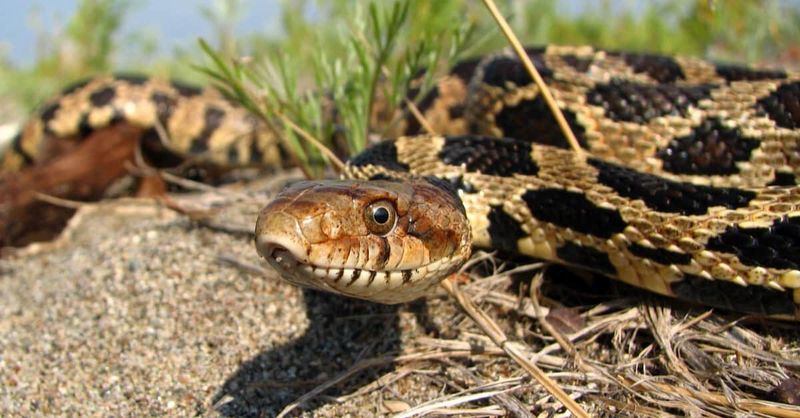
Wildlife researchers documented a 6-foot eastern foxsnake along the shores of Lake Erie in 2018. Its copper head and boldly patterned body made it a stunning subject for their population study. Michigan’s wetlands provide crucial habitat for these increasingly rare constrictors.
Often mistaken for copperheads due to their coloration, foxsnakes are actually harmless to humans. Their preference for marshy habitats puts them in conflict with development along Great Lakes shorelines.
23. Minnesota – Bullsnake
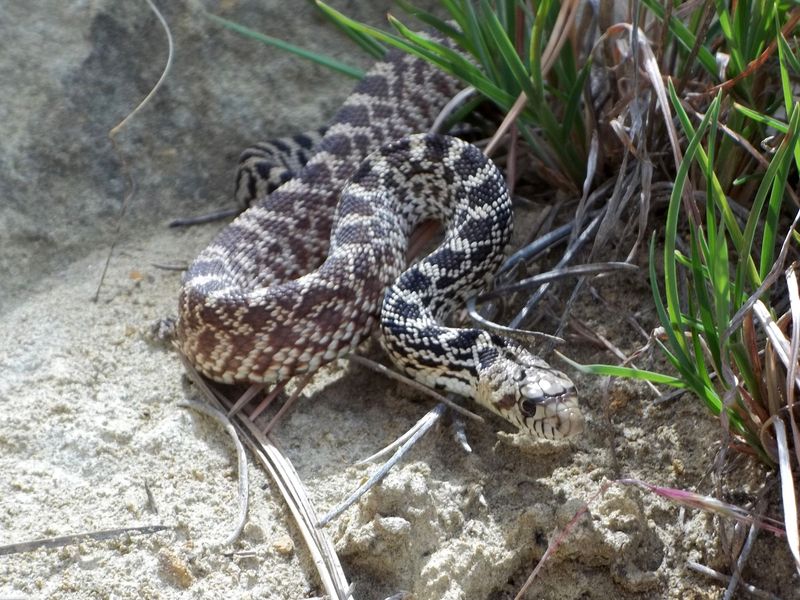
Farmers near Rochester discovered an 8-foot bullsnake patrolling their grain storage in 2020. This massive specimen had clearly been feasting well on the local rodent population! Minnesota’s agricultural areas create ideal hunting grounds for these beneficial constrictors.
Bullsnakes are master mimics, often impersonating rattlesnakes when threatened by flattening their heads and vibrating their tails against dry vegetation. This clever adaptation helps deter potential predators.
24. Mississippi – Eastern Diamondback Rattlesnake
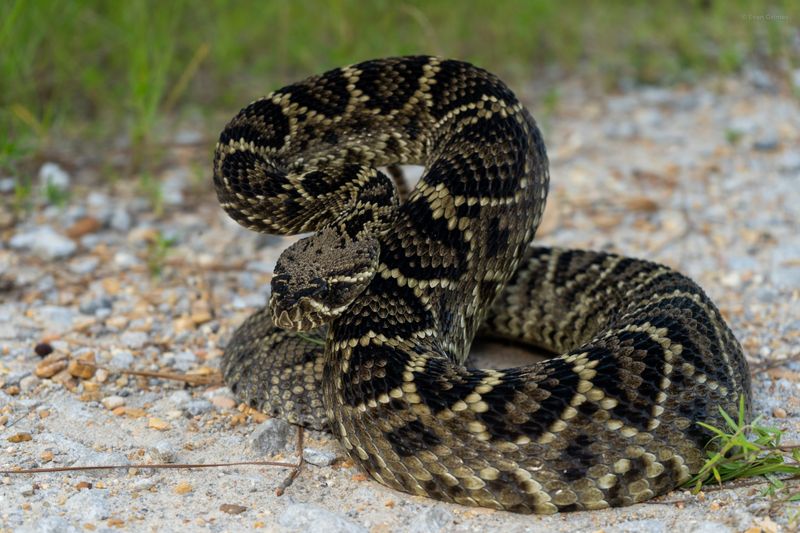
Forestry workers in southern Mississippi encountered an 8-foot-2-inch eastern diamondback in 2014. The massive serpent’s distinctive diamond pattern served as nature’s warning sign against getting too close.
Mississippi’s pine forests and swamplands create perfect habitat for these impressive predators. Despite their intimidating size and venom potency, diamondbacks actually help control rodent populations naturally. Their preferred defense is escape rather than confrontation.
25. Missouri – Black Rat Snake
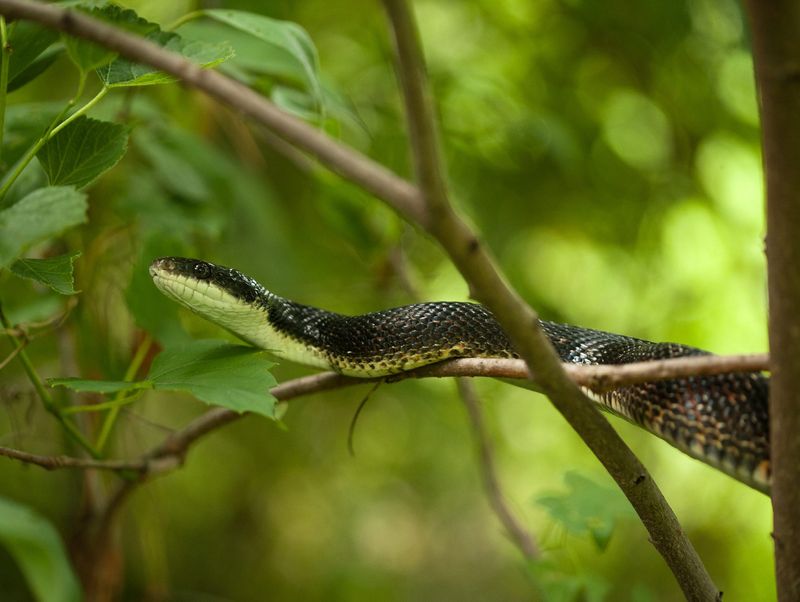
Hikers in the Ozarks photographed an 8-foot black rat snake climbing a rocky bluff in 2017. Its muscular body navigated the vertical surface with remarkable ease and grace. Missouri’s diverse landscapes support healthy populations of these beneficial constrictors.
Their climbing abilities are truly impressive – they can scale brick walls and tree trunks with equal facility. Despite their intimidating size, they’re completely harmless to humans.
26. Montana – Bullsnake
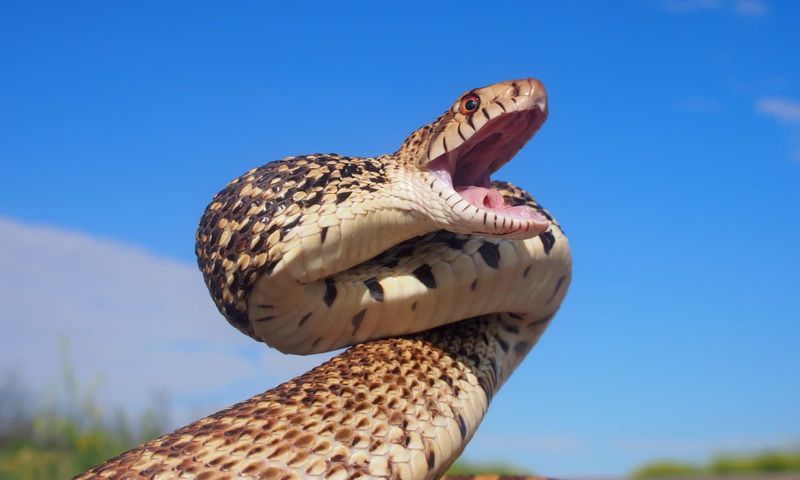
Ranchers near Billings documented an 8-foot bullsnake patrolling their property in 2019. The massive reptile had been keeping their horse barn rodent-free for several seasons. Montana’s open grasslands provide perfect hunting grounds for these beneficial constrictors.
Though often killed due to mistaken identity as rattlesnakes, bullsnakes actually help control rodent populations that can spread disease. Their impressive size makes them efficient predators of even large rats.
27. Nebraska – Bullsnake
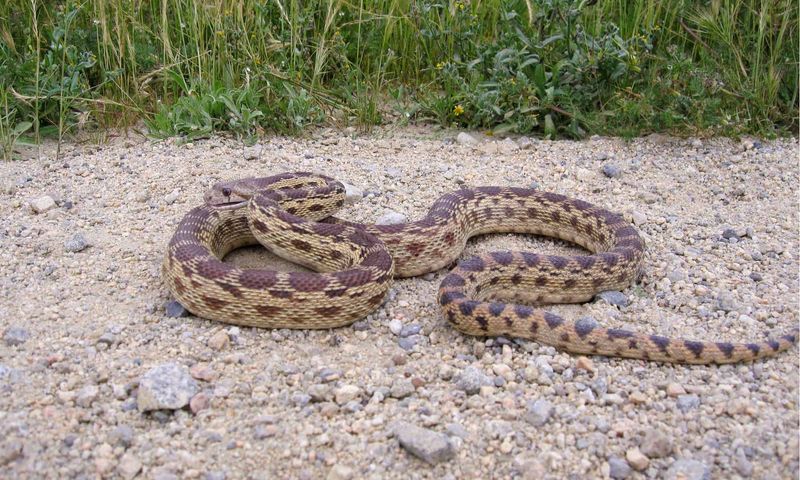
Farmers near Grand Island encountered an 8-foot bullsnake keeping their grain storage rodent-free in 2018. The impressive constrictor had clearly been thriving on the abundant food source! Nebraska’s agricultural landscape creates ideal habitat for these beneficial serpents.
Often persecuted due to resemblance to rattlesnakes, bullsnakes actually save farmers thousands of dollars annually by controlling rodent damage naturally. Their defensive hissing is all bluff – they’re harmless to humans.
28. Nevada – Great Basin Gopher Snake
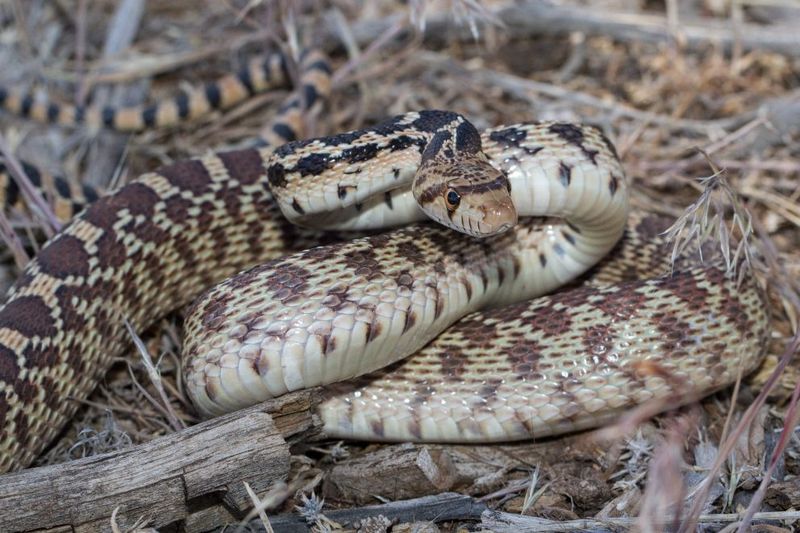
Hikers in the Ruby Mountains stumbled upon a 7-foot Great Basin gopher snake in 2016. The desert-adapted serpent displayed beautiful cream and brown blotches as it basked on sun-warmed rocks.
Nevada’s harsh desert environment has shaped these resilient reptiles. Their water-efficient bodies allow survival where other snakes couldn’t thrive. Masters of rodent control, they’re particularly valuable in agricultural areas where they help protect crops naturally.
29. New Hampshire – Eastern Garter Snake
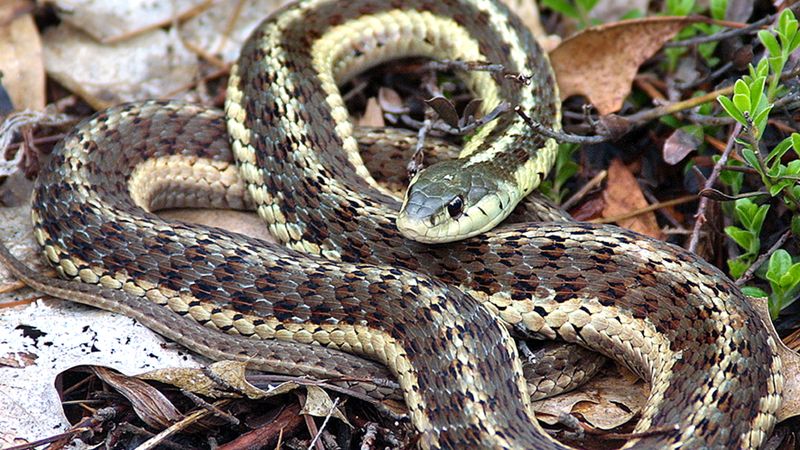
Hikers near Mount Washington spotted a surprisingly large 4-foot eastern garter snake in 2019. Its vibrant yellow stripes created striking contrast against the rocky alpine terrain. New Hampshire’s cold climate makes snake encounters relatively rare.
Garter snakes are among the few species hardy enough to thrive this far north. Their ability to give birth to live young (rather than laying eggs) helps them reproduce successfully in short summer seasons.
30. New Jersey – Eastern Kingsnake
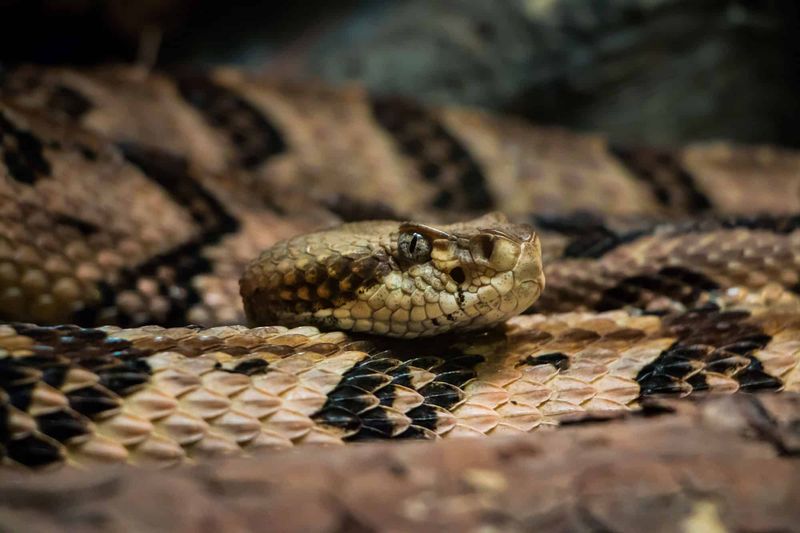
Farmers in Burlington County discovered a 6-foot eastern kingsnake patrolling their blueberry fields in 2017. Its glossy black scales featured distinctive white chain-like patterns running down its back. New Jersey’s diverse habitats support healthy populations of these beneficial constrictors.
Kingsnakes earned their name by eating other snakes – even venomous ones! Their immunity to rattlesnake venom makes them nature’s perfect predator in the Garden State.
31. New Mexico – Bullsnake
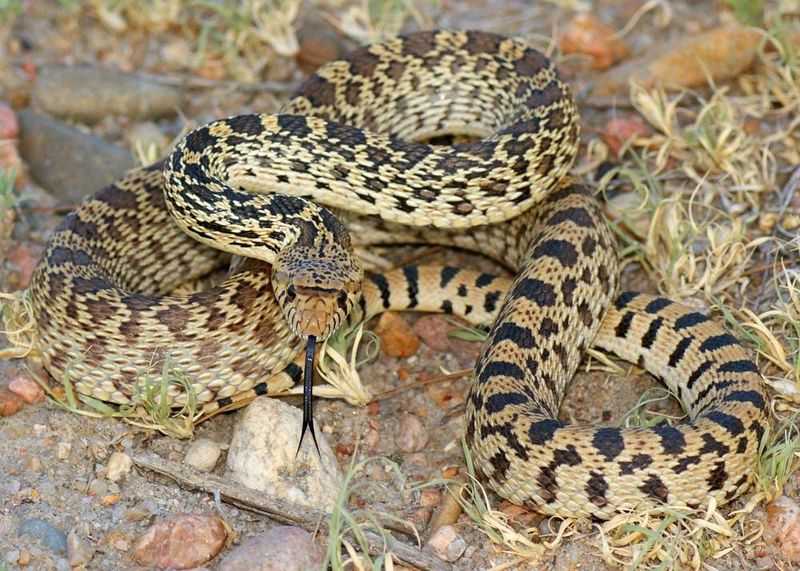
Ranchers near Santa Fe documented an 8-foot bullsnake basking along an irrigation ditch in 2020. Its impressive size and distinctive blotched pattern made identification easy for local wildlife experts. New Mexico’s arid landscape creates perfect habitat for these drought-adapted constrictors.
Often mistaken for rattlesnakes due to their defensive behavior, bullsnakes actually benefit ranchers by controlling rodent populations naturally. Their impressive constriction strength allows them to subdue prey larger than their own head.
32. New York – Black Rat Snake
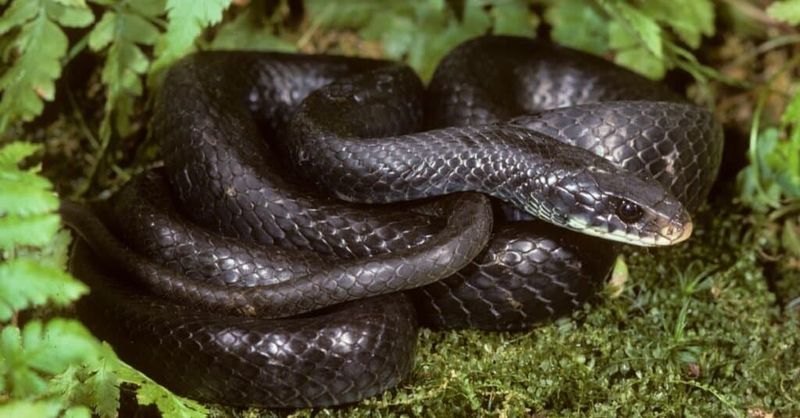
Hikers in the Catskills photographed an 8-foot black rat snake ascending a rocky ledge in 2016. The impressive serpent’s glossy scales reflected sunlight as it navigated the vertical surface with surprising agility. New York’s diverse forests provide perfect habitat for these beneficial constrictors.
Excellent climbers, they’re often found in barns and attics hunting for rodents. Despite their intimidating size, they’re completely harmless to humans and make excellent natural pest control.
33. North Carolina – Eastern Diamondback Rattlesnake
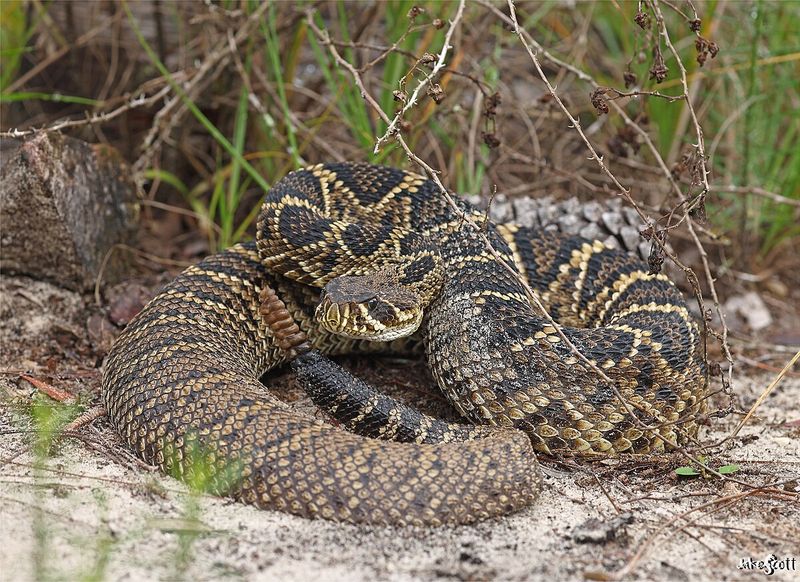
Wildlife researchers documented an 8-foot-1-inch eastern diamondback in the Green Swamp Preserve in 2015. This massive specimen showcased the species’ distinctive diamond pattern and formidable rattle.
North Carolina’s coastal plains provide crucial habitat for these impressive predators. Though their numbers have declined due to habitat loss, conservation efforts aim to protect remaining populations. Their distinctive warning rattle serves as nature’s perfect alarm system.
34. North Dakota – Bullsnake
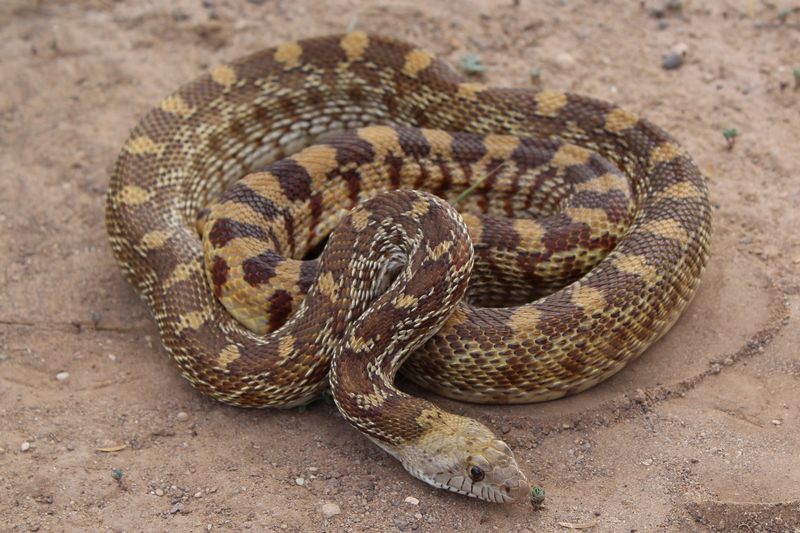
Farmers near Bismarck encountered an 8-foot bullsnake patrolling their equipment shed in 2018. This impressive constrictor had likely been keeping the property rodent-free for several seasons.
North Dakota’s grasslands provide perfect hunting grounds for these beneficial serpents. Despite harsh winters, bullsnakes thrive by hibernating in deep burrows below the frost line. Their ability to mimic rattlesnakes when threatened helps deter potential predators.
35. Ohio – Eastern Black Racer
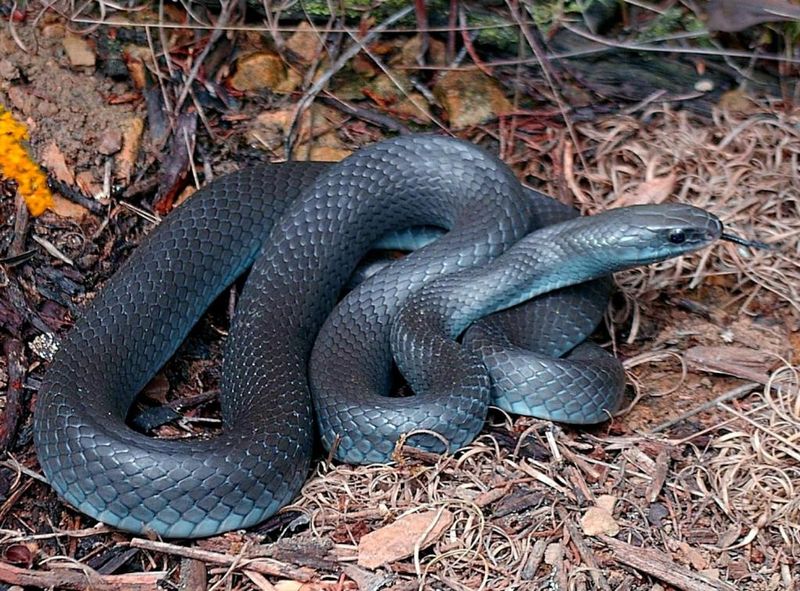
Hikers at Hocking Hills State Park spotted a 7-foot eastern black racer zipping across a trail in 2019. True to its name, this sleek serpent disappeared into underbrush with remarkable speed! Ohio’s diverse landscapes support healthy populations of these beneficial hunters.
Black racers earned their name honestly – they’re among North America’s fastest snakes. Unlike constrictors, they overpower prey through speed and strength rather than coiling around it.
36. Oklahoma – Western Diamondback Rattlesnake
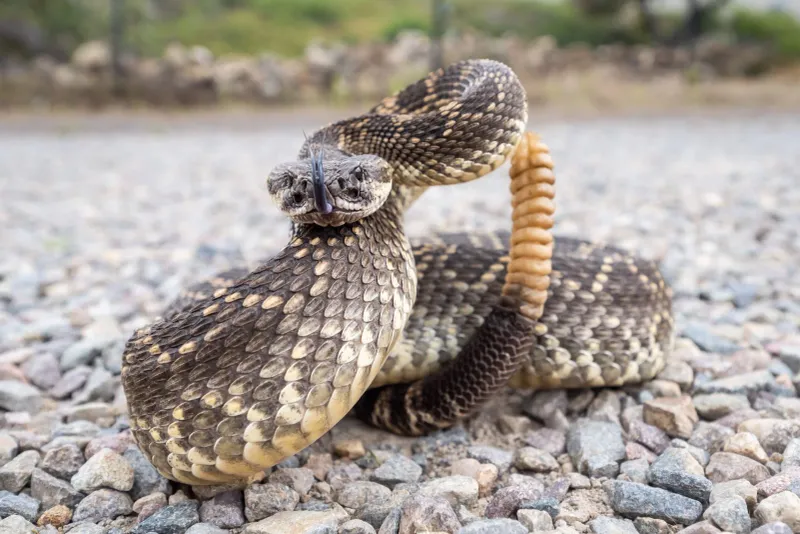
Ranch hands near Lawton documented an 8-foot western diamondback in 2017. This massive serpent’s distinctive diamond pattern and impressive rattle commanded immediate respect from the workers. Oklahoma’s diverse habitats support healthy populations of these venomous predators.
Despite their fearsome reputation, diamondbacks serve an important ecological role by controlling rodent populations naturally. Their distinctive warning rattle actually helps prevent accidental encounters with humans.
37. Oregon – Gopher Snake
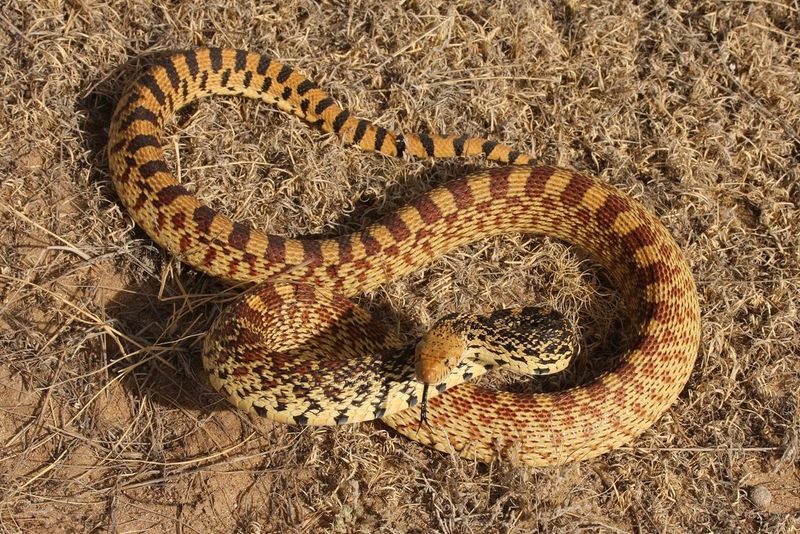
Vineyard workers in the Willamette Valley encountered an 8-foot gopher snake patrolling between rows of pinot noir vines in 2020. The impressive constrictor had been keeping grape-loving rodents at bay naturally. Oregon’s diverse landscapes support healthy populations of these beneficial serpents.
Vineyard owners particularly appreciate their rodent-controlling abilities. Despite their size and defensive hissing, they’re completely harmless to humans and make excellent natural pest control.
38. Pennsylvania – Eastern Timber Rattlesnake
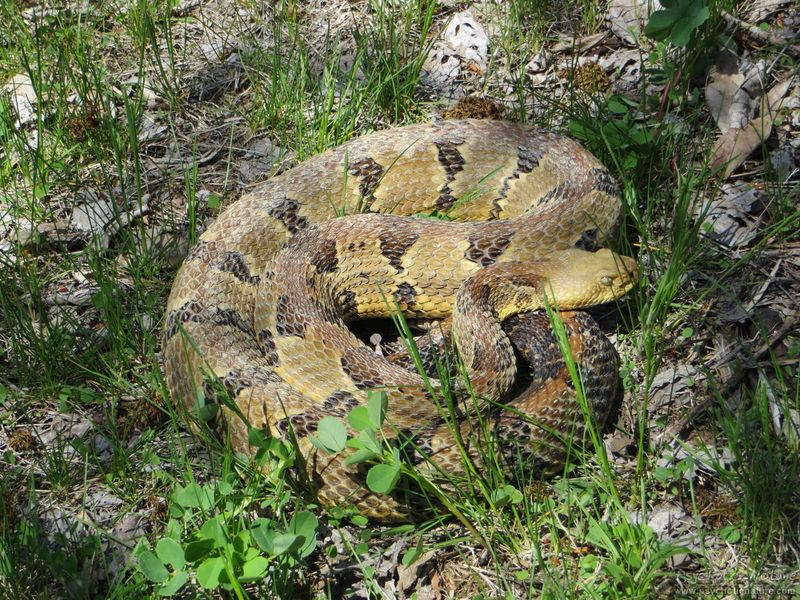
Hikers in the Poconos photographed a 6-foot timber rattlesnake sunning on a rocky outcrop in 2018. Its yellow-phase coloration stood out dramatically against the dark stones. Pennsylvania’s forested mountains provide crucial habitat for these venomous predators.
Conservation efforts have helped stabilize declining populations. Unlike many snake species, female timber rattlesnakes gather in communal birthing areas called “rookeries” to give birth to live young.
39. Rhode Island – Eastern Garter Snake
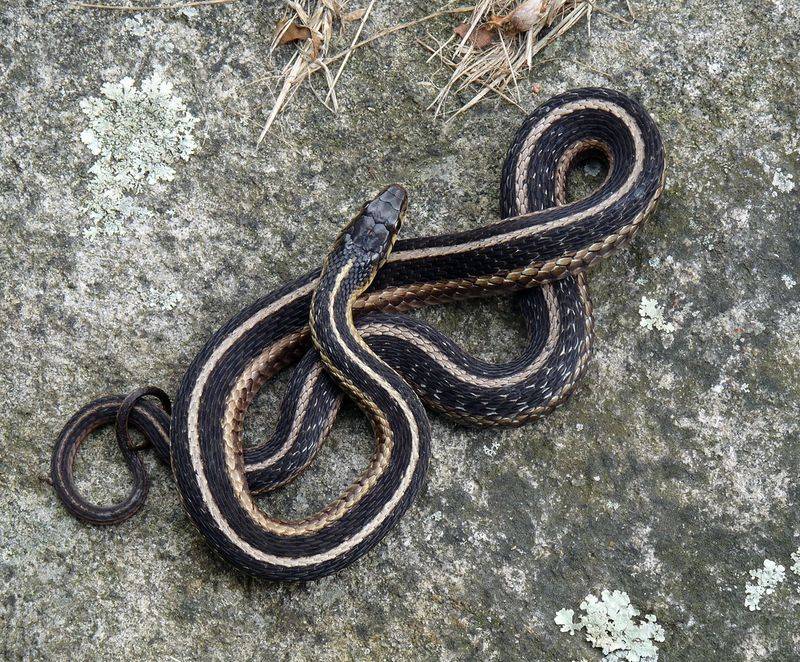
Beachgoers at Napatree Point spotted a 3-foot eastern garter snake navigating coastal dunes in 2016. Its yellow stripes created striking contrast against dark scales and sandy backdrop. Rhode Island’s small size and development pressure make snake encounters relatively rare.
Garter snakes are among the most adaptable species, thriving even in suburban environments. Their varied diet includes earthworms, amphibians, and small fish caught along shorelines.
40. South Carolina – Eastern Diamondback Rattlesnake
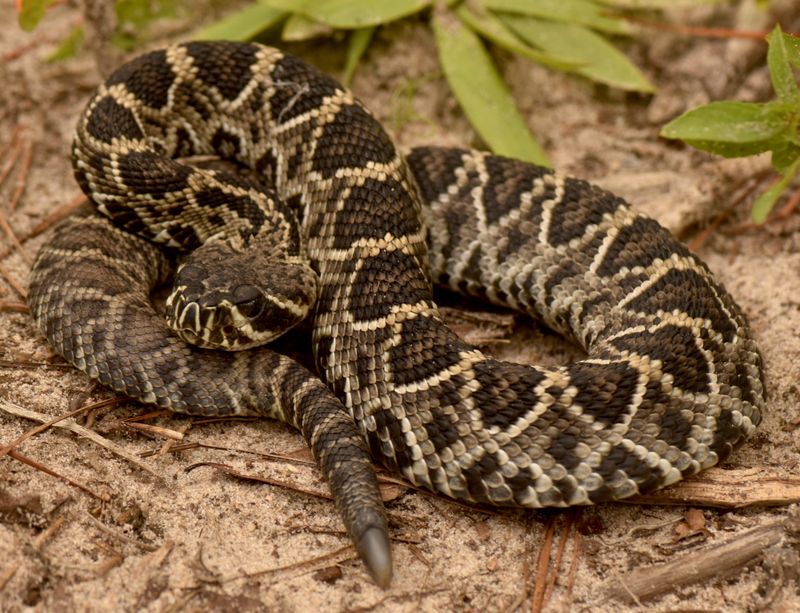
Wildlife researchers documented an 8-foot-4-inch eastern diamondback in the Francis Marion National Forest in 2013. This massive specimen held the state record and weighed an estimated 34 pounds! South Carolina’s coastal plains provide perfect habitat for these impressive predators.
Once common, they’ve declined due to habitat loss and persecution. Their distinctive warning rattle serves as nature’s perfect alarm system, giving humans ample opportunity to retreat.
41. South Dakota – Bullsnake
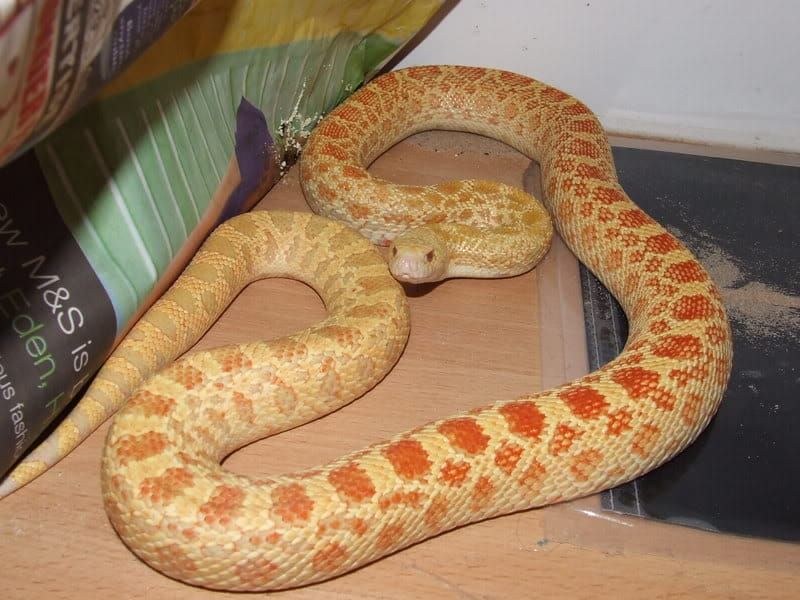
Ranchers in the Black Hills region encountered an 8-foot bullsnake patrolling their horse barn in 2019. This impressive constrictor had clearly been feasting well on the local rodent population! South Dakota’s diverse landscapes support healthy populations of these beneficial serpents.
Often killed due to resemblance to rattlesnakes, bullsnakes actually save ranchers thousands of dollars annually by controlling rodent damage naturally. Their defensive hissing is merely a bluff.
42. Tennessee – Timber Rattlesnake
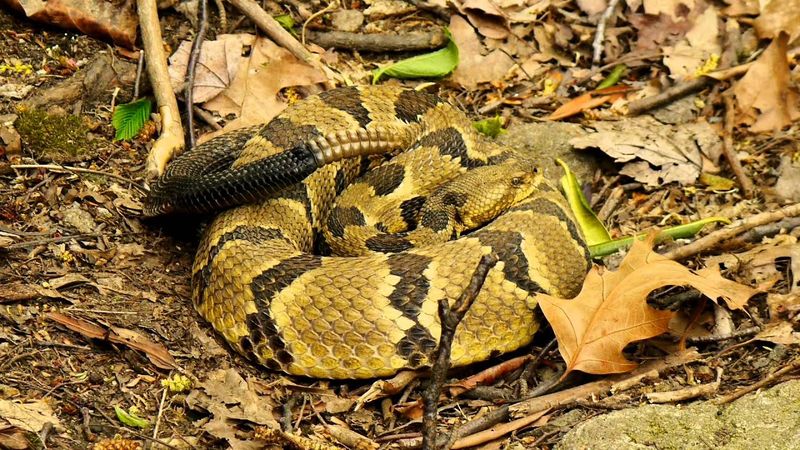
Hikers in the Great Smoky Mountains encountered a 6-foot timber rattlesnake crossing a remote trail in 2016. Its yellow-brown body with distinctive crossbands commanded immediate respect from the startled travelers.
Tennessee’s forested mountains provide perfect habitat for these venomous predators. Conservation efforts have helped stabilize declining populations. Despite their fearsome reputation, timber rattlesnakes are generally non-aggressive when left undisturbed.
43. Texas – Western Diamondback Rattlesnake
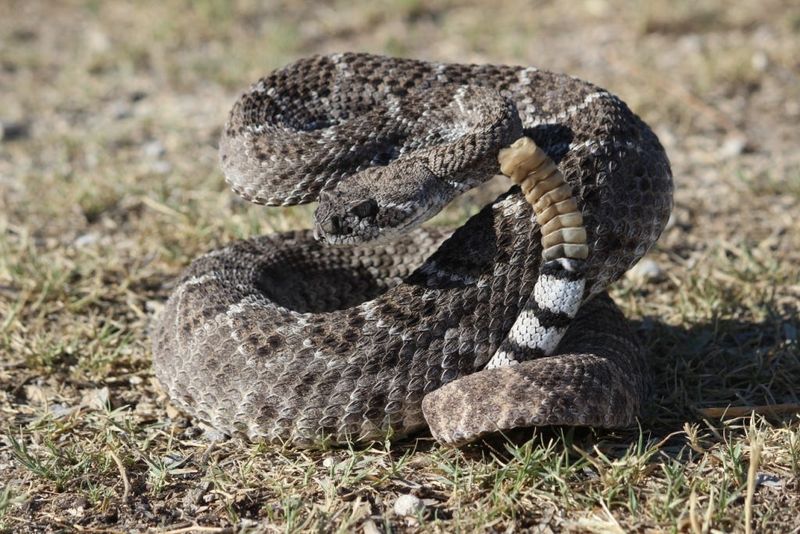
Ranch hands near Abilene documented an 8-foot-2-inch western diamondback in 2014. This massive specimen’s rattle contained an impressive 16 segments, suggesting advanced age and survival skills. Texas’s diverse landscapes support thriving rattlesnake populations.
Despite organized “rattlesnake roundups,” these important predators continue controlling rodent populations naturally. Their distinctive warning rattle actually helps prevent accidental encounters with humans and livestock.
44. Utah – Gopher Snake

Hikers in Zion National Park photographed an 8-foot gopher snake navigating red rock terrain in 2018. Its cream and brown blotched pattern provided surprisingly effective camouflage against the sandstone backdrop.
Utah’s diverse landscapes support healthy populations of these beneficial constrictors. Often mistaken for rattlesnakes due to their defensive behavior, gopher snakes actually help control rodent populations naturally. Their ability to thrive in arid environments showcases remarkable adaptation.
45. Vermont – Eastern Garter Snake
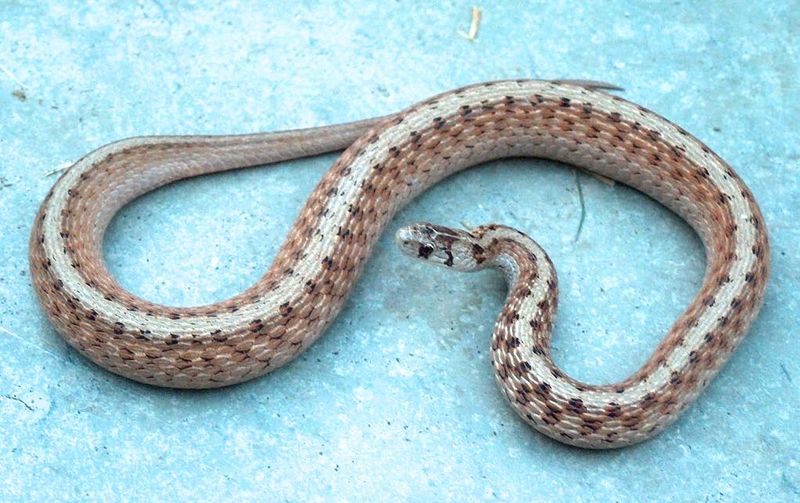
Hikers near Lake Champlain encountered a 4-foot eastern garter snake basking along a shoreline trail in 2017. Its yellow stripes created striking contrast against dark scales and rocky backdrop. Vermont’s cold climate makes snake encounters relatively uncommon.
Garter snakes are among the few species hardy enough to thrive this far north. Their ability to give birth to live young helps them reproduce successfully despite short summer seasons.
46. Virginia – Eastern Rat Snake
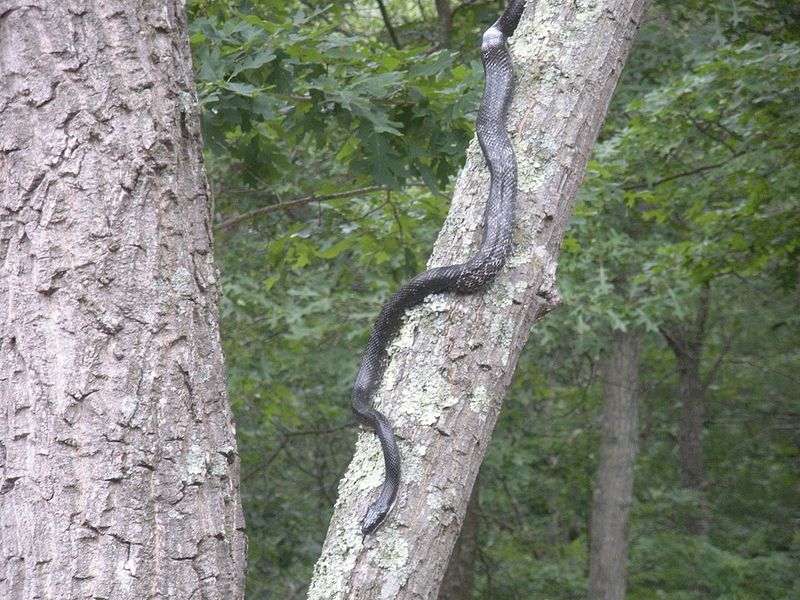
Hikers in Shenandoah National Park photographed an 8-foot eastern rat snake ascending an oak tree in 2015. Its glossy black scales contrasted dramatically against the tree’s pale bark. Virginia’s diverse landscapes support healthy populations of these beneficial constrictors.
Excellent climbers, they’re often spotted ascending trees and exploring barns. Despite their intimidating size, they’re completely harmless to humans and make excellent natural pest control.
47. Washington – Western Diamondback Rattlesnake
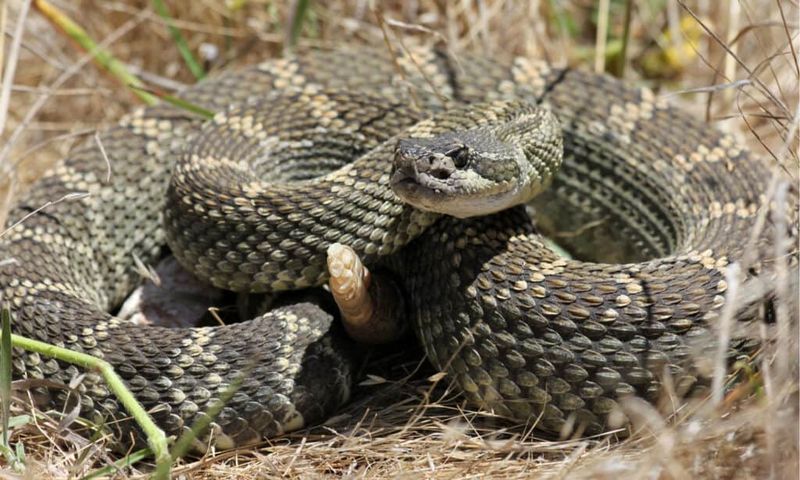
Hikers in the Columbia Basin encountered an 8-foot western diamondback in 2018. This impressive specimen was spotted basking on sun-warmed rocks near a popular trail. Washington’s eastern regions provide suitable habitat for rattlesnakes.
Despite their fearsome reputation, diamondbacks serve an important ecological role by controlling rodent populations naturally. Their distinctive warning rattle actually helps prevent accidental encounters with humans.
48. West Virginia – Eastern Timber Rattlesnake
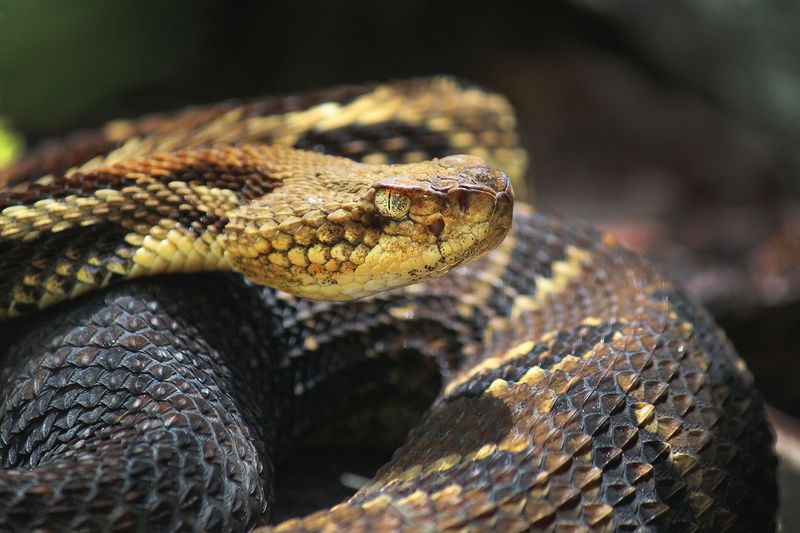
Hikers in the Monongahela National Forest documented a 6-foot timber rattlesnake sunning on a rocky outcrop in 2019. Its yellow-phase coloration created striking contrast against the dark stones. West Virginia’s forested mountains provide crucial habitat for these venomous predators.
Conservation efforts have helped stabilize declining populations. Despite their fearsome reputation, timber rattlesnakes prefer avoiding human contact whenever possible.
49. Wisconsin – Eastern Foxsnake
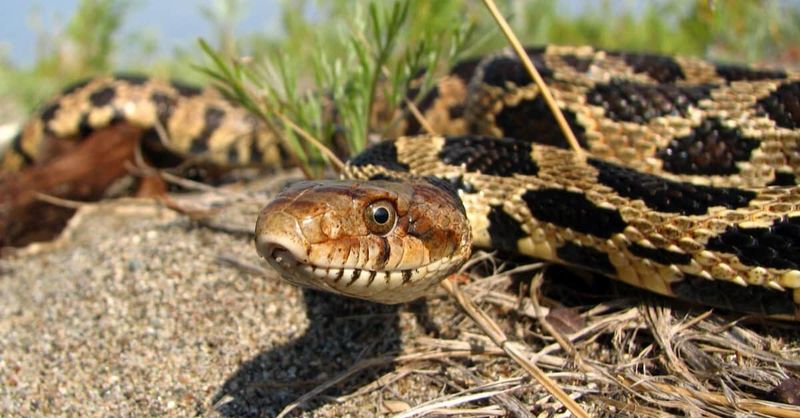
Wildlife researchers documented a 7-foot eastern foxsnake along the shores of Lake Michigan in 2016. Its copper head and boldly patterned body made it a stunning subject for their population study.
Wisconsin’s wetlands provide crucial habitat for these increasingly rare constrictors. Often mistaken for copperheads due to their coloration, foxsnakes are actually harmless to humans. Their powerful constriction abilities make them excellent hunters of rodents and small mammals.
50. Wyoming – Bullsnake
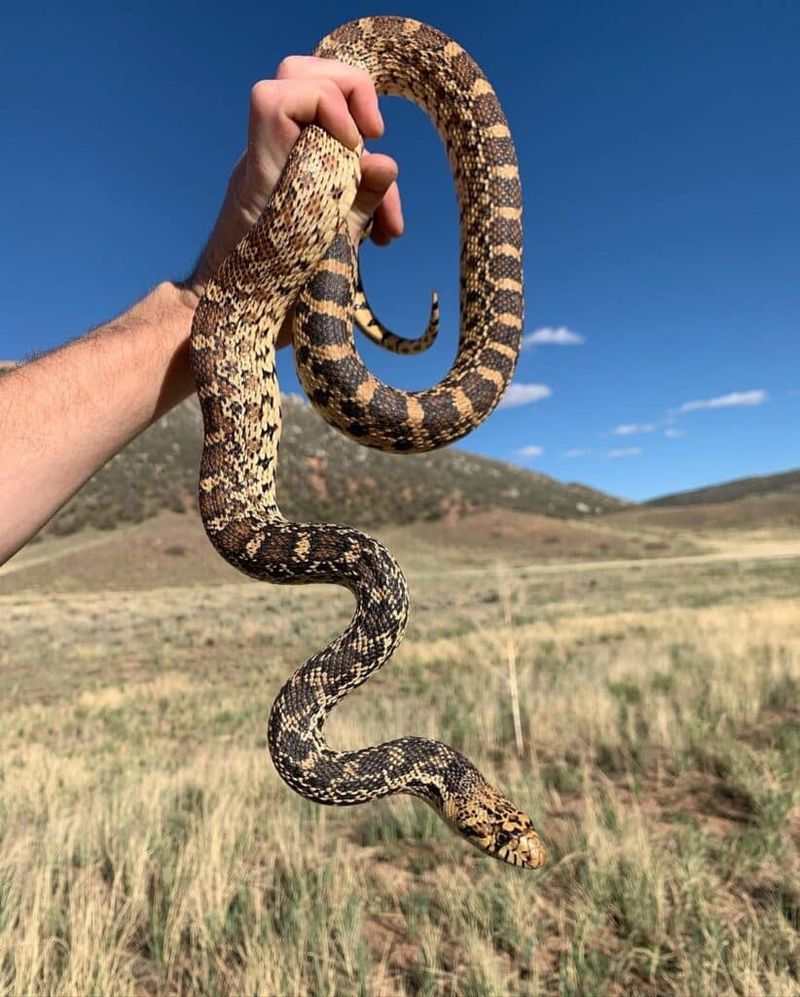
Ranchers near Cody encountered an 8-foot bullsnake patrolling their property in 2020. This massive specimen had likely been keeping their outbuildings rodent-free for several seasons. Wyoming’s open grasslands provide perfect hunting grounds for these beneficial constrictors.
Often persecuted due to resemblance to rattlesnakes, bullsnakes actually help ranchers by controlling rodent populations naturally. Their impressive size makes them efficient predators of even large rats.


